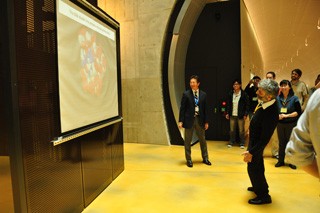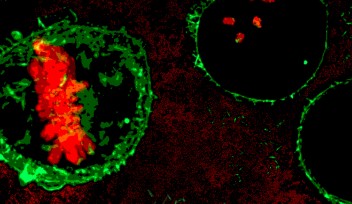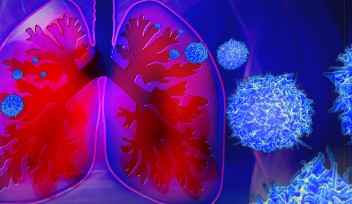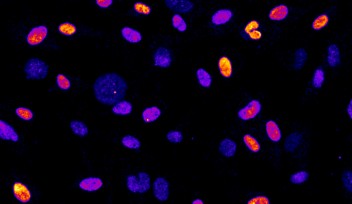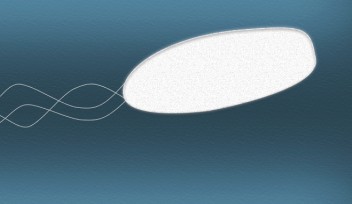Gameifying Proteins, the Kinect-Xbox at OIST
Some people are likely to think supplementary diet when they hear the word, protein. Yet, these molecules invisible to the naked eye are found in every cell, muscle, tissue and organ in our body. The case of ‘invisible’ proteins was recently solved by the launch of a molecular playground at the OIST tunnel gallery.
OIST’s Dr. Fadel Samatey, collaborated with researchers from the University of Massachusetts Amherst (UMASS) to bring a molecular playground to OIST. The playground, a large manipulable display is strategically located next to OIST elevators to catch the attention of staff and visitors going to offices and labs. This exciting venture sees gaming software used ingeniously to enable people to manipulate protein images displayed onto a large screen via a Kinect-Xbox.
The uniqueness of the Kinect, a motion sensing device by Microsoft made for the Xbox 360 video game, is its ability to detect and interact with people through simple body movements. A walk through the playground transforms the area between the screen and the Kinect into a molecular playground. A protein image on the screen becomes alive and begins to move in the direction the person is moving.
The copycat proteins imitate body movement. The molecular playground allows individuals, through slow tai-chi like movements, to manipulate proteins in ways which are both educative and exciting. This enables people to get a full 360 view of these structures so as to examine them from different viewpoints. If you move left-to-right the protein molecule moves left-to-right, if you move forward and backward it leans forward and backwards respectively.
The OIST molecular playground hosts approximately 30 molecules including proteins. This array of molecules of different sizes, shapes and colors lets you manipulate and examine them. The molecules, some of which come from research units at OIST, include Tamiflu, the H1N1 anti-influenza drug, acetophenone, used to create fragrances of almond, cherry and strawberry, as well as DNA, the genetic information carrier.
The interactive software was developed at UMASS and is only currently installed and running at the UMass Amherst Integrated sciences building, Springfield Science Museum, St Olaf College and now the OIST tunnel gallery. Dr. Samatey says, “Scientists get to see these proteins only in confined spaces and being able to play and interact with them like this is quite remarkable. All people have to do really, is play with them.”
The molecular playground was designed by Prof. Craig Martin and his graduate student Adam William, both from UMASS. Undeniably, it is with many thanks to the long-term collaboration between Dr. Samatey and Prof. Eric Martz also from UMASS, that the molecular playground made its way to the OIST tunnel gallery. To learn more about this project, visit the website at www.molecularplayground.org.
Don’t just walk past the molecular playground, stop, manipulate and be amazed!
Specialties
For press enquiries:
Press Inquiry Form






